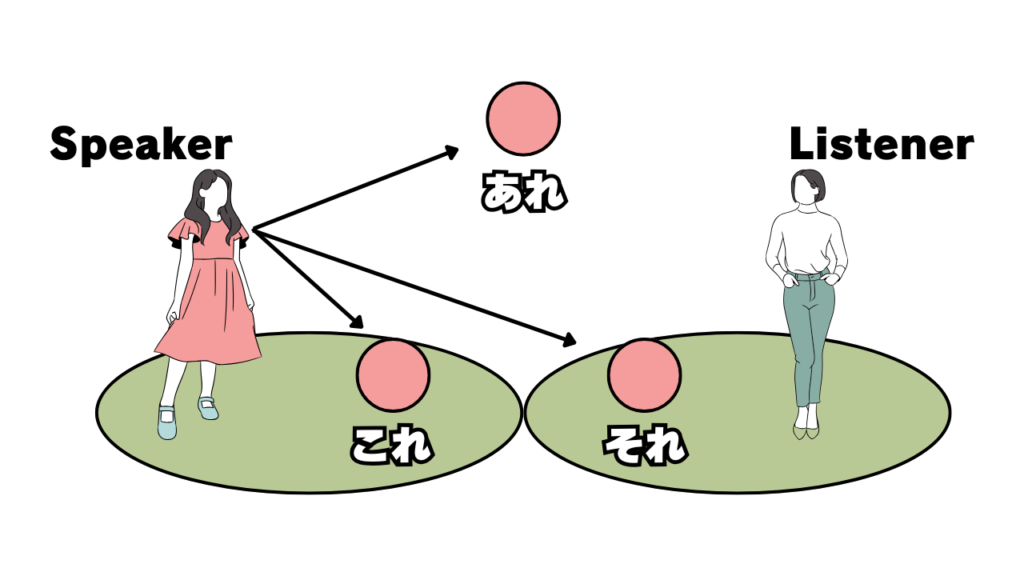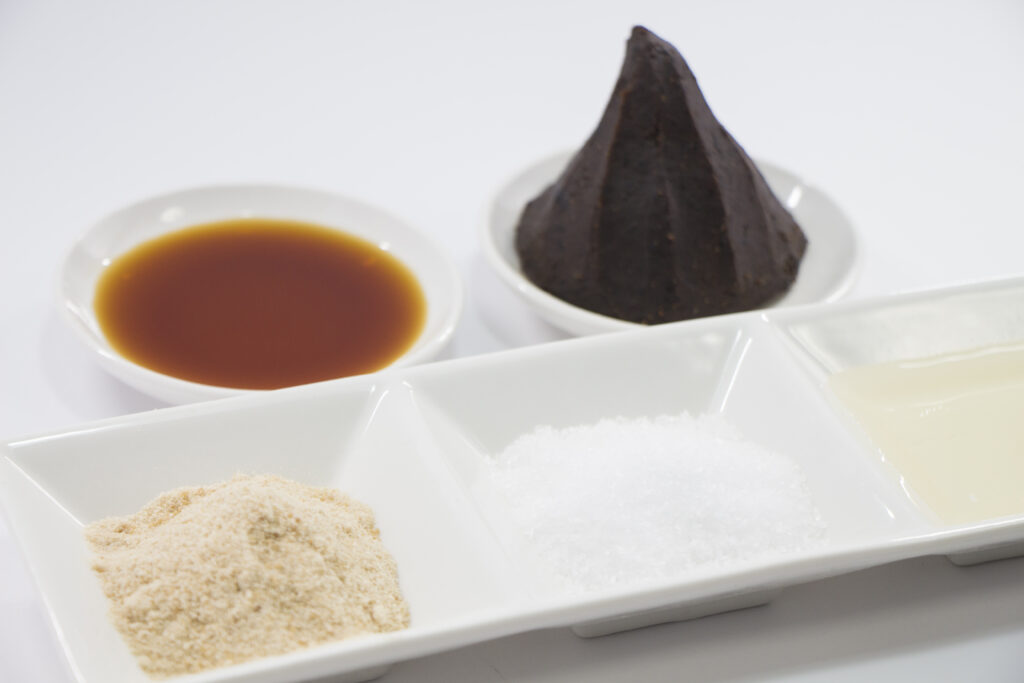これそれあれどれ
Grammar meaning
The Japanese words “これ, それ, あれ, どれ” are used to indicate the spatial relationship of an object in relation to the speaker and the listener.
“これ” refers to something within the speaker’s area and not in the listener’s area. “それ” refers to something within the listener’s area but not in the speaker’s area. “あれ” refers to something that is in neither the speaker’s nor the listener’s area. “どれ” is an interrogative word used to ask about a specific object from multiple choices.
Rather than the absolute distance between the speaker and the object, these words are used based on the relative distance to the listener.

You can use “ここそこあそこどこ” in a similar way, so check out this link too.
Also, it might be helpful to study “このそのあのどの” along with the current grammar to better understand the connections between them.
Example sentence
・これは先生の時計です。
This is the teacher’s watch.
・それは何ですか。
What is it?
・わたしのバイクはあれですよ。
My bike is that one.
・Q:すみません。いちばん新しいスマホはどれですか。
Q:Excuse me, which one is the newest smartphone?
A:いちばん新しいスマホはこれですね。
A:The newest smartphone is this one.

Additional notes
If you don’t understand the sense of what counts as your own area, you won’t be able to use 「これそれあれどれ」 the same way as native Japanese speakers.
This feeling is difficult to explain in words, but we teach our students that if they can physically touch something from where they are, it belongs to their area.
If they can’t touch it but the other person can, then it belongs to the other person’s area.
This isn’t a perfectly accurate rule, but it’s relatively close to how Japanese people perceive it.
Conversation example
店員:いらっしゃいませ。
客 :それは何ですか。
店員:これはですね。日本の食べものですよ。
客 :へぇ。あれは何ですか。
店員:あれはしょうゆです。これとこれとこれもしょうゆですね。
客 :どれがいちばん安いですか。
店員:いちばん安いのはこれですね。
Clerk: Welcome!
Customer: What is that?
Clerk: This is miso. It’s a Japanese food.
Customer: I see. What is that?
Clerk: That is soy sauce. This, this, and this are also soy sauce.
Customer: Which one is the cheapest?
Clerk: The cheapest one is this one.

For Japanese Teachers
This time, I explained “どれ” along with “これそれあれ,” but I think many schools teach them separately.
I believe it’s best to teach according to your school’s policy.
Also, the grammar of “これそれあれどれ” is important in terms of the relationship between the speaker and the listener.
When you say “これ” or “それ” in front of students, it’s important to be mindful that you don’t make any grammatical mistakes in the relationship between you and the learner.
I think it’s good to pay attention to this when teaching.





